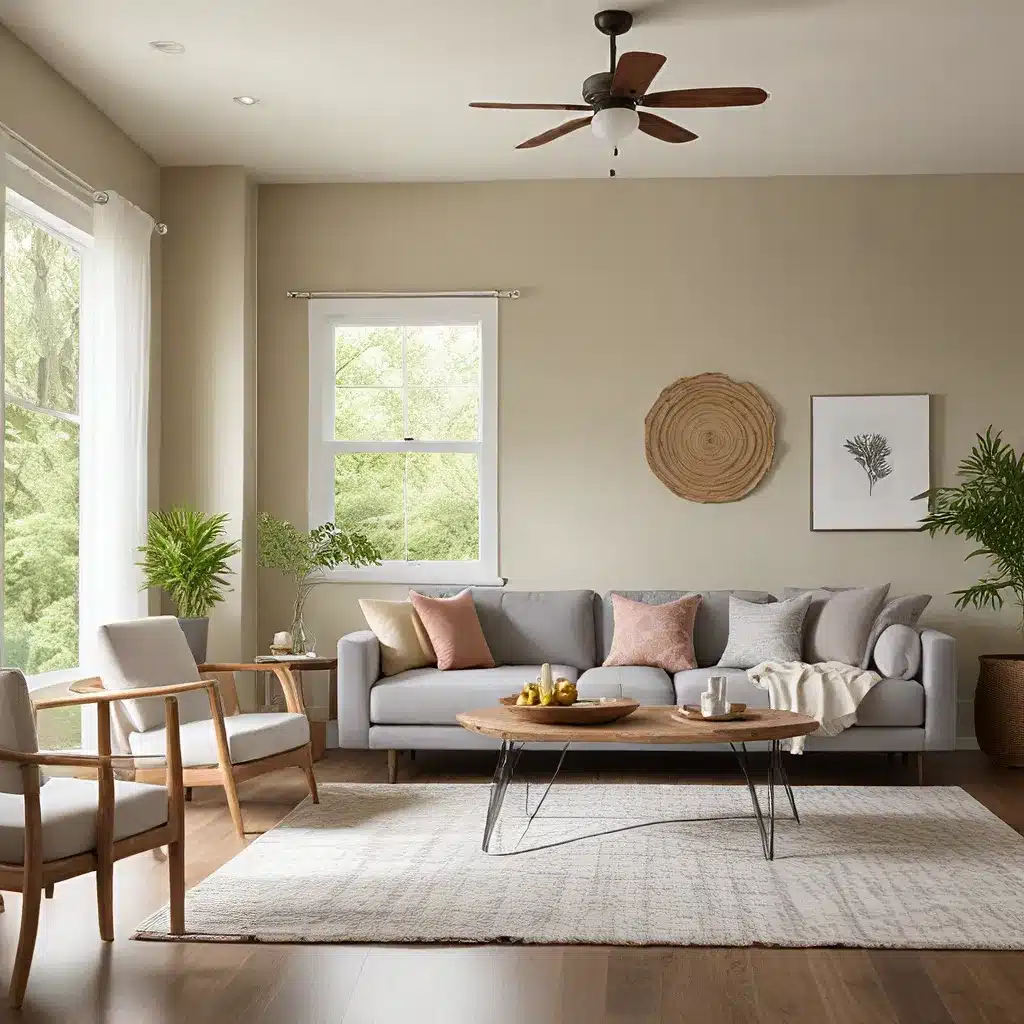
The Importance of Thoughtful Design for Overall Wellbeing
Thoughtful, intentional interior design has the power to transform our living spaces into true sanctuaries, promoting both physical and mental wellness. By carefully curating the elements within a room, designers can harness the profound impact that our environments have on our daily lives and overall quality of life.
At the heart of Urban Grace Interiors, we believe that a well-designed home is not just about aesthetics – it’s about crafting spaces that nourish the senses, soothe the soul, and empower our best selves. From the colors we choose to the textures we incorporate, every design decision can influence our mood, energy levels, and even our behavior.
Designing for Mindfulness and Relaxation
One of the key ways that interior design can enhance wellness is by cultivating a sense of mindfulness and relaxation within the home. By carefully selecting calming color palettes, incorporating natural elements, and ensuring ample natural light, designers can create spaces that promote a sense of serenity and escape from the stresses of daily life.
For example, research has shown that the color blue can have a soothing effect, lowering blood pressure and heart rate, while green hues can evoke feelings of calmness and rejuvenation. Integrating natural materials, such as wood, stone, and plants, can also have a grounding and restorative effect, connecting us with the natural world.
Additionally, thoughtful furniture placement and lighting design can dramatically impact the overall ambiance of a room. Comfortable, ergonomic seating and soft, diffused lighting can encourage relaxation and contemplation, inviting residents to unwind and recharge.
Optimizing Spaces for Productivity and Focus
While creating calming, restorative spaces is crucial, interior design can also play a key role in enhancing productivity and focus within the home. By strategically designing areas dedicated to work, study, or creative pursuits, designers can help homeowners maximize their efficiency and creativity.
In home offices or dedicated workspaces, incorporating ample natural light, adjustable lighting, and ergonomic furniture can support sustained concentration and minimize physical discomfort. Incorporating storage solutions and organizational systems can also help minimize distractions and maintain a sense of order, allowing residents to thrive in their professional or academic endeavors.
For homeowners with diverse needs, such as those who work from home or have children, multifunctional spaces that seamlessly transition between work and leisure can be particularly valuable. By thoughtfully zoning areas and utilizing flexible furnishings, designers can create environments that adapt to the changing needs of the household.
Cultivating Connections and Community
Beyond the individual, interior design can also foster a sense of community and connection within the home. By designing spaces that encourage social interaction, whether it’s a cozy living room for family gatherings or a welcoming kitchen for shared meals, designers can nurture the relationships that are so vital to our overall wellbeing.
Incorporating open floor plans, comfortable seating arrangements, and inviting design elements can help create an atmosphere that facilitates conversation, collaboration, and quality time spent with loved ones. Additionally, strategically positioned outdoor living spaces, such as patios or balconies, can bridge the gap between indoor and outdoor environments, promoting a harmonious connection with nature.
Sustainable and Healthy Materials
In the pursuit of wellness-focused design, the selection of sustainable and healthy materials is of paramount importance. By prioritizing eco-friendly, non-toxic products, designers can create living spaces that not only look beautiful but also support the overall health and wellbeing of the occupants.
From low-VOC paints and formaldehyde-free cabinetry to organic textiles and natural fiber rugs, there are a wealth of sustainable and wellness-centric options available to today’s designers. These materials not only minimize the environmental impact of a project but also contribute to improved indoor air quality and reduced exposure to harmful chemicals.
Beyond the physical materials, designers can also consider the emotional and psychological impact of the design choices they make. Incorporating natural elements, biophilic design principles, and sensory-stimulating features can foster a deep sense of connection and rejuvenation within the home.
Leveraging the Expertise of Interior Designers
While the principles of wellness-focused design may seem intuitive, translating them into a cohesive, functional, and aesthetically-pleasing living space requires the expertise of experienced interior designers. These professionals possess the knowledge, skills, and resources to transform a house into a true sanctuary, tailored to the unique needs and preferences of each client.
By collaborating with an interior designer, homeowners can benefit from their specialized training, industry connections, and creative vision. From space planning and furniture selection to lighting design and material sourcing, a skilled designer can seamlessly integrate wellness-enhancing elements into the overall design concept.
Moreover, interior designers can serve as trusted partners, guiding clients through the decision-making process and ensuring that the final result aligns with their goals for health, happiness, and overall wellbeing. By leveraging the expertise of these design professionals, homeowners can create living spaces that not only look beautiful but also nourish the body, mind, and soul.
Conclusion: Elevating Everyday Living
In the pursuit of a healthier, happier lifestyle, the role of interior design cannot be overstated. By thoughtfully curating our living environments, we can harness the power of our surroundings to promote mindfulness, relaxation, productivity, connection, and a deep sense of well-being.
Through the careful selection of colors, materials, and design elements, as well as the strategic integration of sustainable and wellness-focused features, interior designers can elevate the everyday experience of our homes. By partnering with these professionals, homeowners can unlock the transformative potential of their living spaces, creating sanctuaries that not only inspire but also nourish the mind, body, and spirit.

